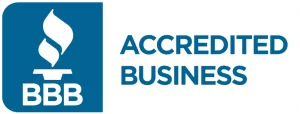What is Bank Reconciliation?
Bank reconciliation is the process of matching your financial records with your bank statements. It helps ensure that every transaction in your financial records is accurate and corresponds with the transactions listed in your bank statement. Regular reconciliation helps detect errors, prevent fraud, and manage cash flow effectively.
Common Banking Reconciliation Errors
There are several types of errors that can occur during bank reconciliation. Some of the most common include:
- Missing Transactions: Transactions that appear in the bank statement but are not recorded in your financial records.
- Duplicate Transactions: Transactions recorded more than once in your financial records.
- Incorrect Amounts: Transactions recorded with incorrect amounts.
- Unrecorded Bank Charges or Interests: Bank charges or interests not recorded in your financial records.
- Timing Differences: Transactions that have been recorded in the financial records but have not yet appeared in the bank statement.
Causes of Banking Reconciliation Errors
Understanding the causes of these errors can help in preventing them. Here are some common causes:
- Human Error: Mistakes made while entering data can lead to discrepancies.
- Timing Differences: Some transactions may not have cleared the bank yet, causing differences between your records and the bank statement.
- Software Issues: Problems with accounting software can cause reconciliation errors.
- Bank Errors: Errors made by the bank can also result in reconciliation issues.
- Fraudulent Activities: Unauthorized transactions can lead to discrepancies.
Symptoms of Banking Reconciliation Errors
Recognizing the symptoms of reconciliation errors is crucial for timely correction. Here are some signs to look out for:
- Discrepancies between the bank statement and financial records.
- Unexplained differences in account balances.
- Missing or duplicate transactions.
- Incorrect transaction amounts.
- Delays in reconciling accounts.
How to Fix Banking Reconciliation Errors
Fixing reconciliation errors involves several steps. Follow these steps to resolve the errors effectively:
Step 1: Identify the Errors
The first step in fixing reconciliation errors is to identify them. Compare your financial records with your bank statement to find discrepancies. Look for missing, duplicate, or incorrect transactions.
Step 2: Correct Data Entry Errors
Once you have identified the errors, correct any data entry mistakes. Ensure that all transactions are recorded accurately in your financial records.
- Review each transaction in your financial records.
- Compare the amounts and dates with the bank statement.
- Correct any discrepancies.
Step 3: Record Missing Transactions
If there are transactions in the bank statement that are not in your financial records, record them.
- Identify the missing transactions.
- Record them in your financial records with the correct amounts and dates.
Step 4: Remove Duplicate Transactions
If there are duplicate transactions in your financial records, remove them.
- Identify the duplicate transactions.
- Remove the duplicates to ensure accurate records.
Step 5: Adjust for Bank Charges and Interests
Record any bank charges or interests that are not in your financial records.
- Review your bank statement for any charges or interests.
- Record them in your financial records.
Step 6: Address Timing Differences
Timing differences can cause discrepancies during reconciliation. If a transaction has been recorded in your financial records but not yet appeared in the bank statement, note it and reconcile it in the next period.
Step 7: Verify Bank Statement Accuracy
Ensure that the bank statement is accurate. Sometimes, banks make errors too. If you find any discrepancies that you believe are due to bank errors, contact your bank for clarification.
Preventing Banking Reconciliation Errors
Preventing reconciliation errors is essential for maintaining accurate financial records. Here are some tips to help you avoid these errors:
- Regular Reconciliation: Reconcile your accounts regularly to catch and correct errors promptly.
- Accurate Data Entry: Ensure that all transactions are entered accurately.
- Use Reliable Software: Use reliable accounting software to minimize errors.
- Stay Informed: Keep yourself informed about any changes in bank charges or interest rates.
- Audit Regularly: Conduct regular audits to detect and correct errors.
Conclusion
Banking reconciliation errors can cause significant issues in your financial records. By understanding the common types of errors, their causes, and symptoms, you can take steps to prevent them. Regular reconciliation, accurate data entry, and using reliable software are key to maintaining accurate financial records. If you encounter reconciliation errors, follow the steps outlined above to correct them promptly. Keeping your financial records accurate ensures better financial management and helps in making informed business decisions.











